Nolan Oswald Dennis
a recurse 4 [3] worlds
01 Oct 2023 - 11 Aug 2024
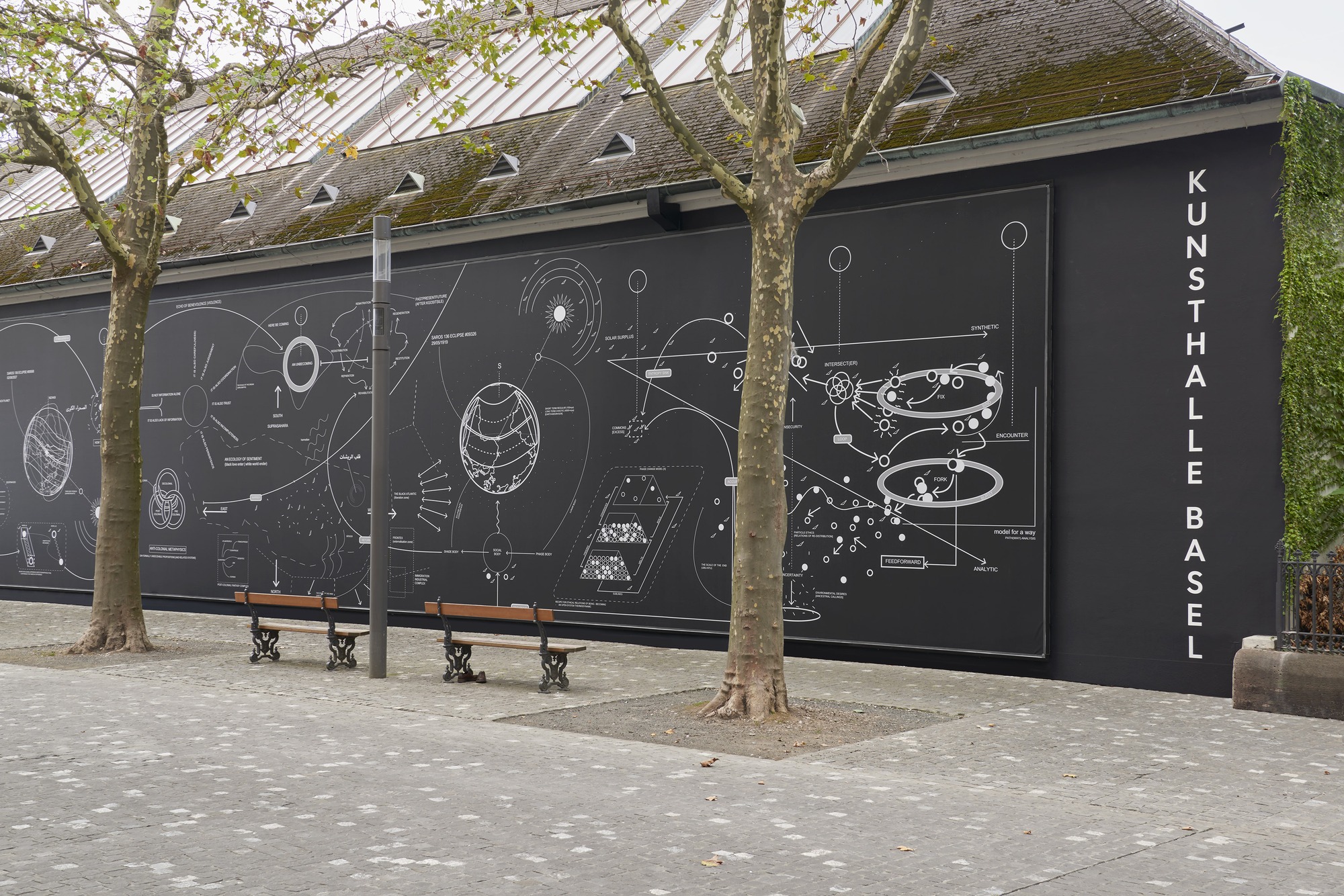
Nolan Oswald Dennis, a recurse 4 [3] worlds, Kunsthalle Basel back wall, 2023, exhibition view, photo: Philipp Hänger / Kunsthalle Basel
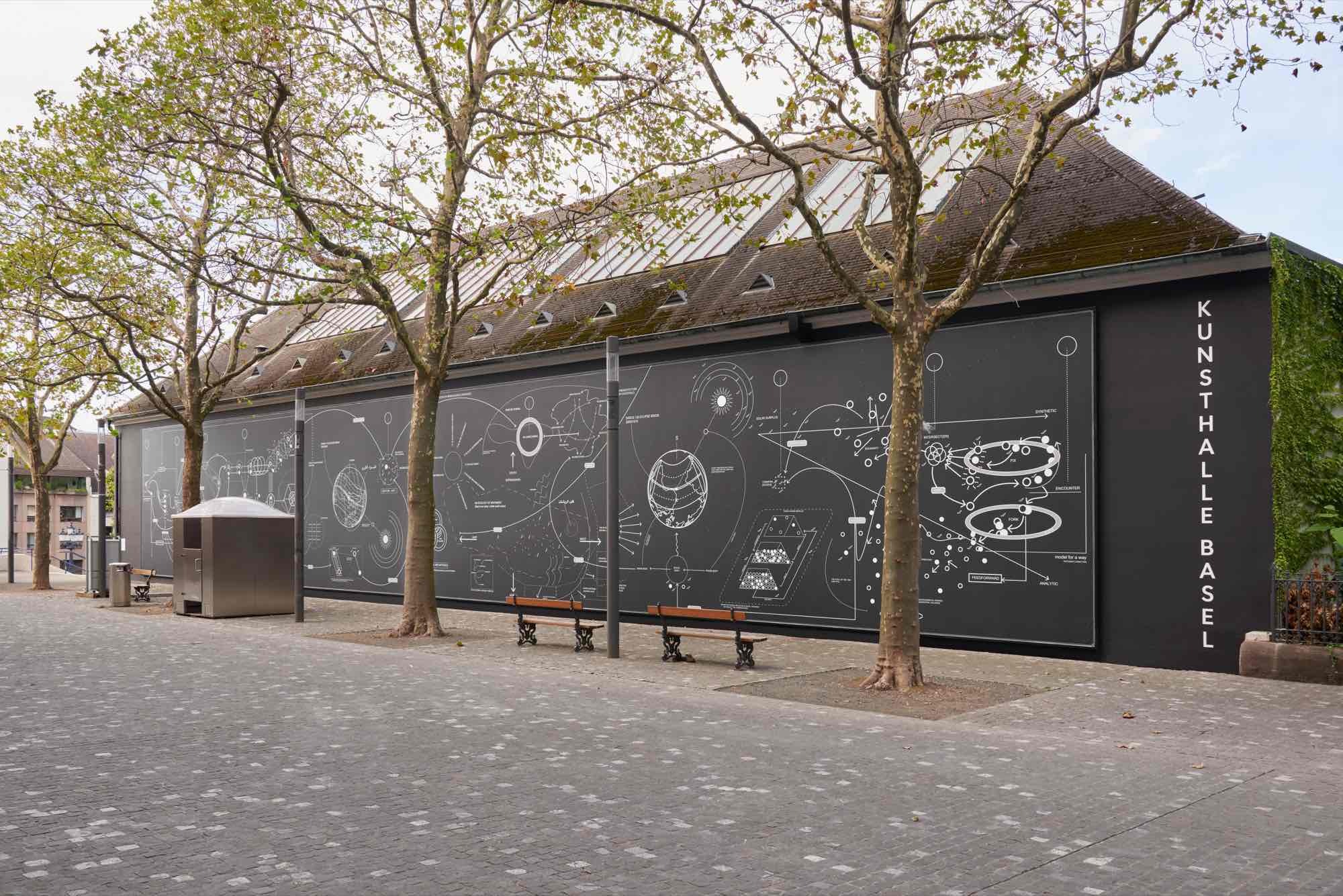
Nolan Oswald Dennis, a recurse 4 [3] worlds, Kunsthalle Basel back wall, 2023, exhibition view, photo: Philipp Hänger / Kunsthalle Basel
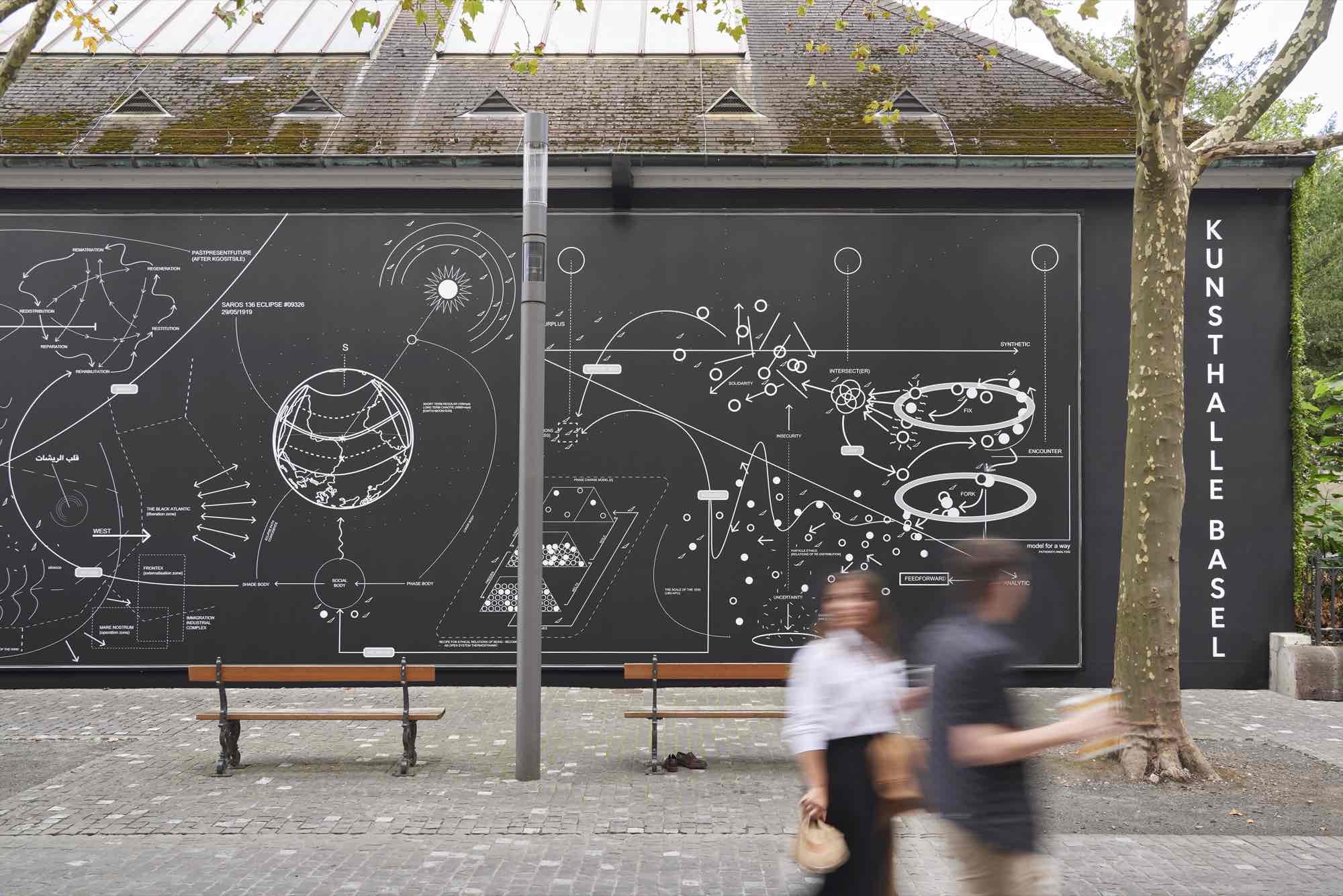
Nolan Oswald Dennis, a recurse 4 [3] worlds, Kunsthalle Basel back wall, 2023, exhibition view, photo: Philipp Hänger / Kunsthalle Basel

Nolan Oswald Dennis, a recurse 4 [3] worlds, Kunsthalle Basel back wall, 2023, exhibition view, photo: Philipp Hänger / Kunsthalle Basel
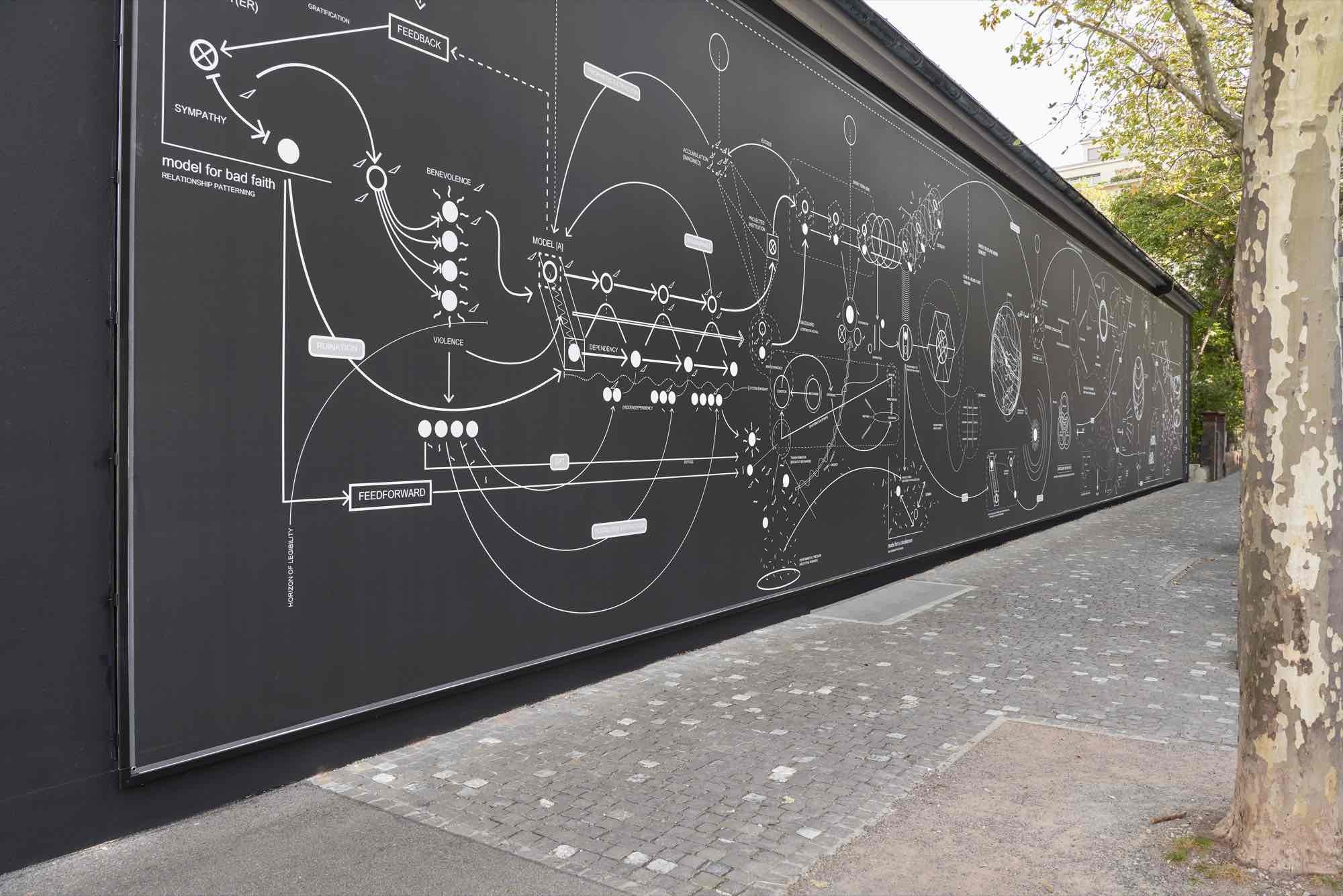
Nolan Oswald Dennis, a recurse 4 [3] worlds, Kunsthalle Basel back wall, 2023, exhibition view, photo: Philipp Hänger / Kunsthalle Basel
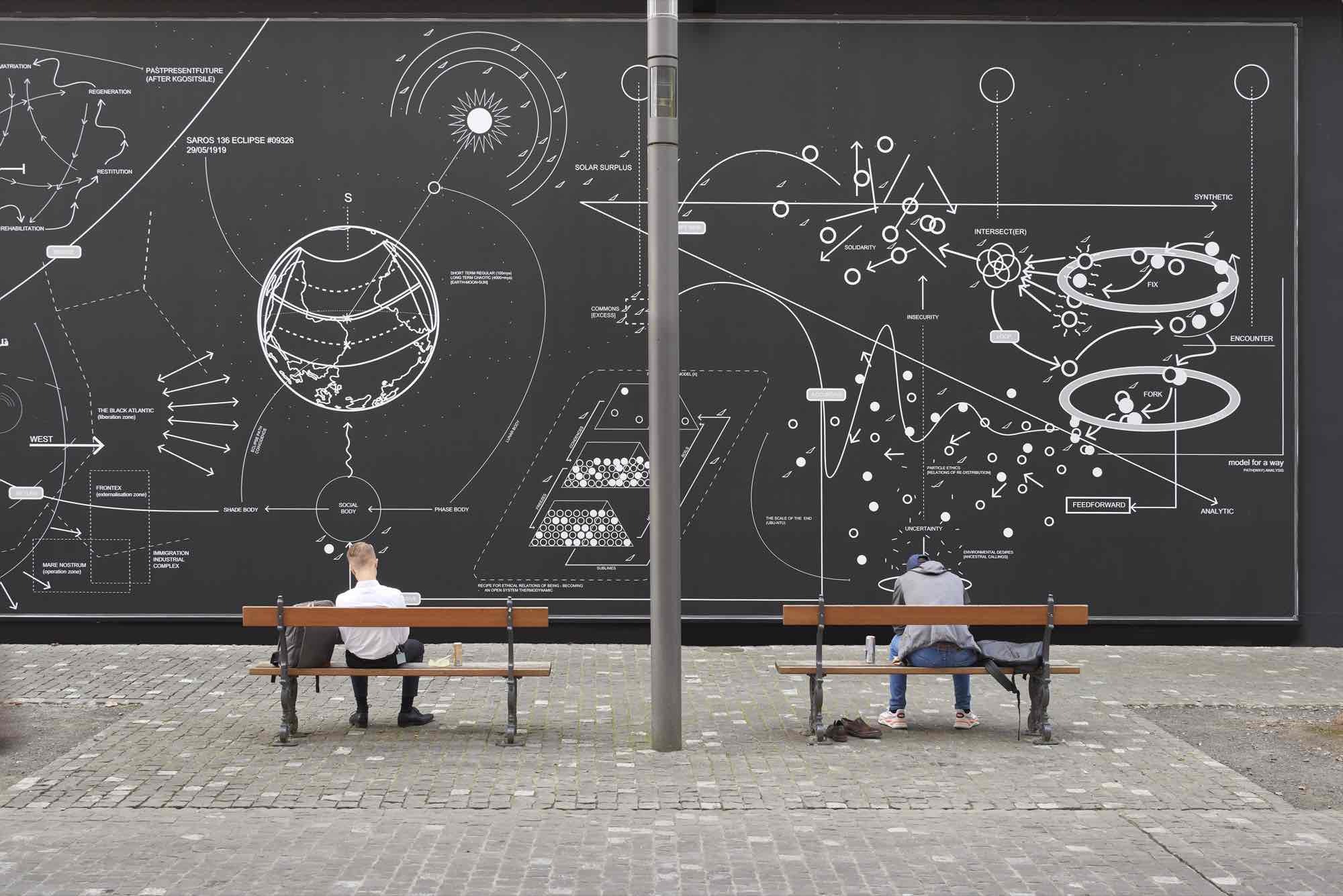
Nolan Oswald Dennis, detail view, of: a recurse 4 [3] worlds, Kunsthalle Basel back wall, 2023, photo: Philipp Hänger / Kunsthalle Basel

Nolan Oswald Dennis, detail view, of: a recurse 4 [3] worlds, Kunsthalle Basel back wall, 2023, photo: Philipp Hänger / Kunsthalle Basel

Nolan Oswald Dennis, detail view, of: a recurse 4 [3] worlds, Kunsthalle Basel back wall, 2023, photo: Philipp Hänger / Kunsthalle Basel
Nolan Oswald Dennis presents a monumental, site-specific artwork extending across the back wall of Kunsthalle Basel. The project employs mathematical abstractions, eclipse diagrams, African fractal geometry, and other representational models to chart systems, logics, and metahistories. This new work aims to create an aggregate of multiple interrelated worlds. In it, the Sahara is represented through repeating patterns and serves to illustrate how the temporal and spatial African-European historical continuum has been repeatedly disrupted. Within this sprawling diagrammatic framework, the artist attempts to deconstruct anti-Black worlds through conceptual contami- nations and reversals, with all their political, spiritual, and technical implications: here the South is up, and the North is down, sub-Saharan and supra-Saharan regions are inverted, while past, present, and future collide.
In the artist’s own words: “For me, a recurse 4 [3] worlds is the first step in a new diagrammatic cycle aiming to write ‘recurses.’ ‘Recurse’ is an invented word derived from ‘recursive’ and ‘curse.’ Here, a ‘recurse’ is an assembly of graphic lines and sentence fragments in which relational struc- tures and historical conditions are arranged to produce a) effects that exceed the scope of possible causes and b) consequences that precede possible causes. These effects and consequences can be self-replicating or selftransforming, but rarely both. In a ‘recurse,’ consequences and causes are explored beyond the horizon of linear time, geography, and justice. Continuing the anti-colonial tradition of opacity, this work activates the back wall as a site of Black study: a form of collective thinking enacted publicly and yet impermeable to conventional methods of public reading.
The two ends of the artwork propose two models for encounter. On the left, or western side, is a ‘model for bad faith,’ which sketches conditions for what could be called a recursive conception of relations. Here, colonial benevolence creates paternalistic dependencies, where cycles of violence, extraction, and ruination are understood as a gift.
On the right, or eastern side, ‘a model for a way’ sketches conditions for an accursive concep- tion of relations. Here, the accursed, or the wretched of the earth, take the form of proba- bility clouds in patterns of uncertainty and insecurity suggesting their attempt to trans- form their own conditions.
At the center of the wall, a set of eclipse path diagrams note two Saharan eclipses in what is known as the Solar Saros cycle series 136, encompassing an eclipse on May 29, 1919, and the next, upcoming total eclipse on August 2, 2027. The mathematics that defines these eclipse cycles are reversible and work forward and backward through time. Between these two eclipse paths, the Sahara bridges the past, present, and future as the zones in which the recursive and accursive tendencies of the work meet. The Sahara is designated as a zone of encounter where historical processes are synthetically gathered and re-opposed.”
The result is a dizzying and fantastical intellectual map that invites reading and rereading, finding and losing oneself. As Dennis’s first such artwork in public space, the artist imagined the project as a tool for disorientation—for reconsidering concepts of space, time, history, and imaginative possibility.
In the artist’s own words: “For me, a recurse 4 [3] worlds is the first step in a new diagrammatic cycle aiming to write ‘recurses.’ ‘Recurse’ is an invented word derived from ‘recursive’ and ‘curse.’ Here, a ‘recurse’ is an assembly of graphic lines and sentence fragments in which relational struc- tures and historical conditions are arranged to produce a) effects that exceed the scope of possible causes and b) consequences that precede possible causes. These effects and consequences can be self-replicating or selftransforming, but rarely both. In a ‘recurse,’ consequences and causes are explored beyond the horizon of linear time, geography, and justice. Continuing the anti-colonial tradition of opacity, this work activates the back wall as a site of Black study: a form of collective thinking enacted publicly and yet impermeable to conventional methods of public reading.
The two ends of the artwork propose two models for encounter. On the left, or western side, is a ‘model for bad faith,’ which sketches conditions for what could be called a recursive conception of relations. Here, colonial benevolence creates paternalistic dependencies, where cycles of violence, extraction, and ruination are understood as a gift.
On the right, or eastern side, ‘a model for a way’ sketches conditions for an accursive concep- tion of relations. Here, the accursed, or the wretched of the earth, take the form of proba- bility clouds in patterns of uncertainty and insecurity suggesting their attempt to trans- form their own conditions.
At the center of the wall, a set of eclipse path diagrams note two Saharan eclipses in what is known as the Solar Saros cycle series 136, encompassing an eclipse on May 29, 1919, and the next, upcoming total eclipse on August 2, 2027. The mathematics that defines these eclipse cycles are reversible and work forward and backward through time. Between these two eclipse paths, the Sahara bridges the past, present, and future as the zones in which the recursive and accursive tendencies of the work meet. The Sahara is designated as a zone of encounter where historical processes are synthetically gathered and re-opposed.”
The result is a dizzying and fantastical intellectual map that invites reading and rereading, finding and losing oneself. As Dennis’s first such artwork in public space, the artist imagined the project as a tool for disorientation—for reconsidering concepts of space, time, history, and imaginative possibility.
